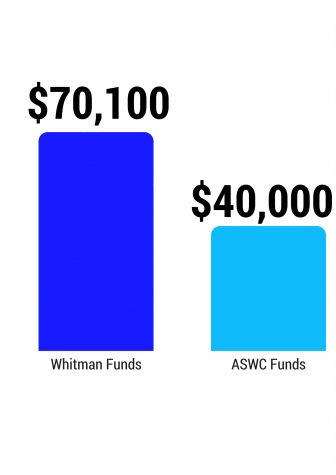Pay to Play? Club Sports Stretch to Cover Funding Shortfalls
March 9, 2017
Including 11 teams and hundreds of athletes, Club Sports at Whitman play a massive role in the lives of many students. With so many teams applying for and deserving of funding, it is not always easy to decide where the money goes. Historically, teams have been left with more questions than answers. However, the Committee recently restructured the fund application in an attempt to be more equitable and transparent.
Unlike varsity teams at Whitman, Club Sports teams are expected to subsidize their operations. According to the Club Sports Handbook, “While teams may be granted an annual budget through Club Sports, it is not the goal that all team costs will be covered completely through such funds.” The Club Sports Committee, comprised of four students and three Whitman staff members, facilitates this annual budget. Teams make ends meet through alternative means of fundraising, ranging from club-imposed membership fees to hosting sports tournaments, selling Frisbees and relying on generous donations from team alums.

The sources of Club Sports funding.
Despite their best efforts to raise money, Club Sports teams almost always inherently feature some exclusivity due to costs. In late February, the men’s ultimate Frisbee team competed in a tournament outside of Stanford, California—six players that regularly attend practice were asked to stay home.
“As a community that prides itself on being really accepting to everyone, it’s difficult to make cuts due to lack of funding,” senior co-captain of the men’s Sweets team Nathan Gruenberg said.
NoahLani Litwinsella, climbing team co-captain and budget manager, has faced similar issues with his team.
“There’s a pretty big socioeconomic barrier to climbing, so we’re trying our best to avoid team dues,” he said. For the national tournament, however, athletes typically have to pay for themselves. Litwinsella hopes to mitigate these costs with “individualized” fundraising later this year.
The Club Sports Committee has traditionally struggled with transparency. Mitchell Cutter, ASWC Finance Chair, member of the Club Sports Committee and captain of the ski team, is in the process of trying to remedy this issue.
“[In the past] there has not been so great transparency because administrators were making the final decisions on teams’ budgets,” he said.
Gruenberg, whose team was allotted $2,500 less this year, despite an increase in team membership, echoed this sentiment.
“We never heard a reason as to why our budget was cut by $2,500, which was really frustrating. I feel like our questions weren’t completely answered.”
Earlier this semester, Cutter rewrote the budget request form to more closely resemble the ASWC request form—a thorough, detailed application. For the first time ever, teams are also now required to elect budget managers and keep detailed ledgers of every expenditure. Despite these changes, teams experiencing rapid growth may have difficulty obtaining the funds they need.
“For new teams it’s hard. You can model potential growth, but Club Sports likes to see pretty rigid finances when reviewing requests,” Litwinsella said. The climbing captain sees submitting requests in person as one potential solution to this problem: “I think there’s stuff that paper can’t quite reflect that a human-to-human conversation could.”
While historically the budget allocation process has been far from perfect, Club Sports offers the Whitman community an invaluable service.




